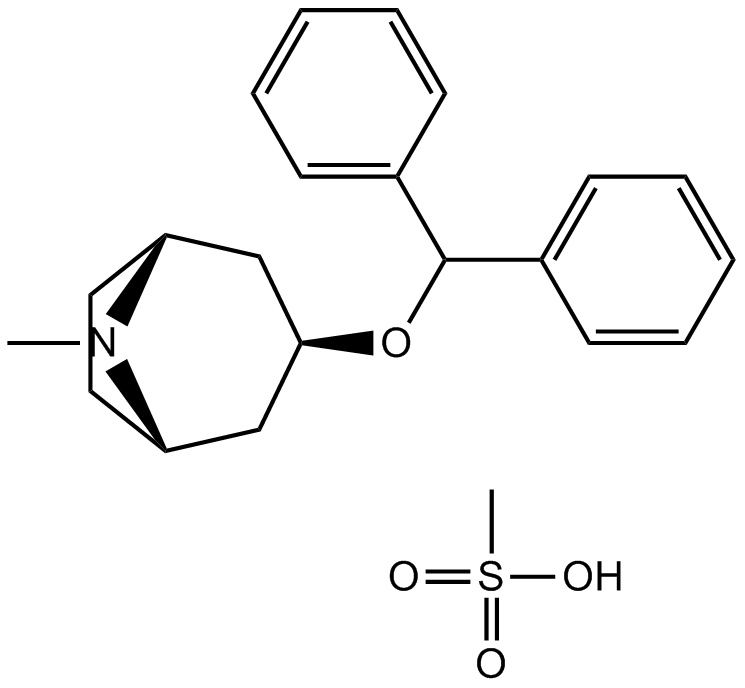Benztropine mesylate (Synonyms: NSC 169913) |
| Catalog No.GC16791 |
Dopamine transporter (DAT) inhibitor
Products are for research use only. Not for human use. We do not sell to patients.

Cas No.: 132-17-2
Sample solution is provided at 25 µL, 10mM.
Benzatropine mesylate is a centrally-acting, antimuscarinic agent used as an adjunct in the treatment of Parkinson's disease.Target: mAChRBenzatropine mesylate is a centrally-acting, antimuscarinic agent used as an adjunct in the treatment of Parkinson's disease. It may also be used to treat extrapyramidal reactions, such as dystonia and Parkinsonism, caused by antipsychotics. Symptoms of Parkinson's disease and extrapyramidal reactions arise from decreases in dopaminergic activity which creates an imbalance between dopaminergic and cholinergic activity. Anticholinergic therapy is thought to aid in restoring this balance leading to relief of symptoms. In addition to its anticholinergic effects, benztropine also inhibits the reuptake of dopamine at nerve terminals via the dopamine transporter. Benzatropine mesylate also produces antagonistic effects at the histamine H1 receptor [1, 2].Benztropine (BZT) and its analogues inhibit dopamine uptake and bind with moderate to high affinity to the dopamine transporter (DAT). BZT analogues also exhibit varied binding affinities for muscarinic M(1) and histamine H(1) receptors. The BZT analogues showed a wide range of histamine H(1) receptor (K(i)=16-37,600 nM) and DAT (K(i)=8.5-6370 nM) binding affinities [3].
References:
[1]. Wszola, B.A., K.M. Newell, and R.L. Sprague, Risk factors for tardive dyskinesia in a large population of youths and adults. Exp Clin Psychopharmacol, 2001. 9(3): p. 285-96.
[2]. van Harten, P.N., et al., Intermittent neuroleptic treatment and risk for tardive dyskinesia: Curacao Extrapyramidal Syndromes Study III. Am J Psychiatry, 1998. 155(4): p. 565-7.
[3]. Kulkarni, S.S., et al., Comparative structure-activity relationships of benztropine analogues at the dopamine transporter and histamine H(1) receptors. Bioorg Med Chem, 2006. 14(11): p. 3625-34.
Average Rating: 5 (Based on Reviews and 35 reference(s) in Google Scholar.)
GLPBIO products are for RESEARCH USE ONLY. Please make sure your review or question is research based.
Required fields are marked with *




















